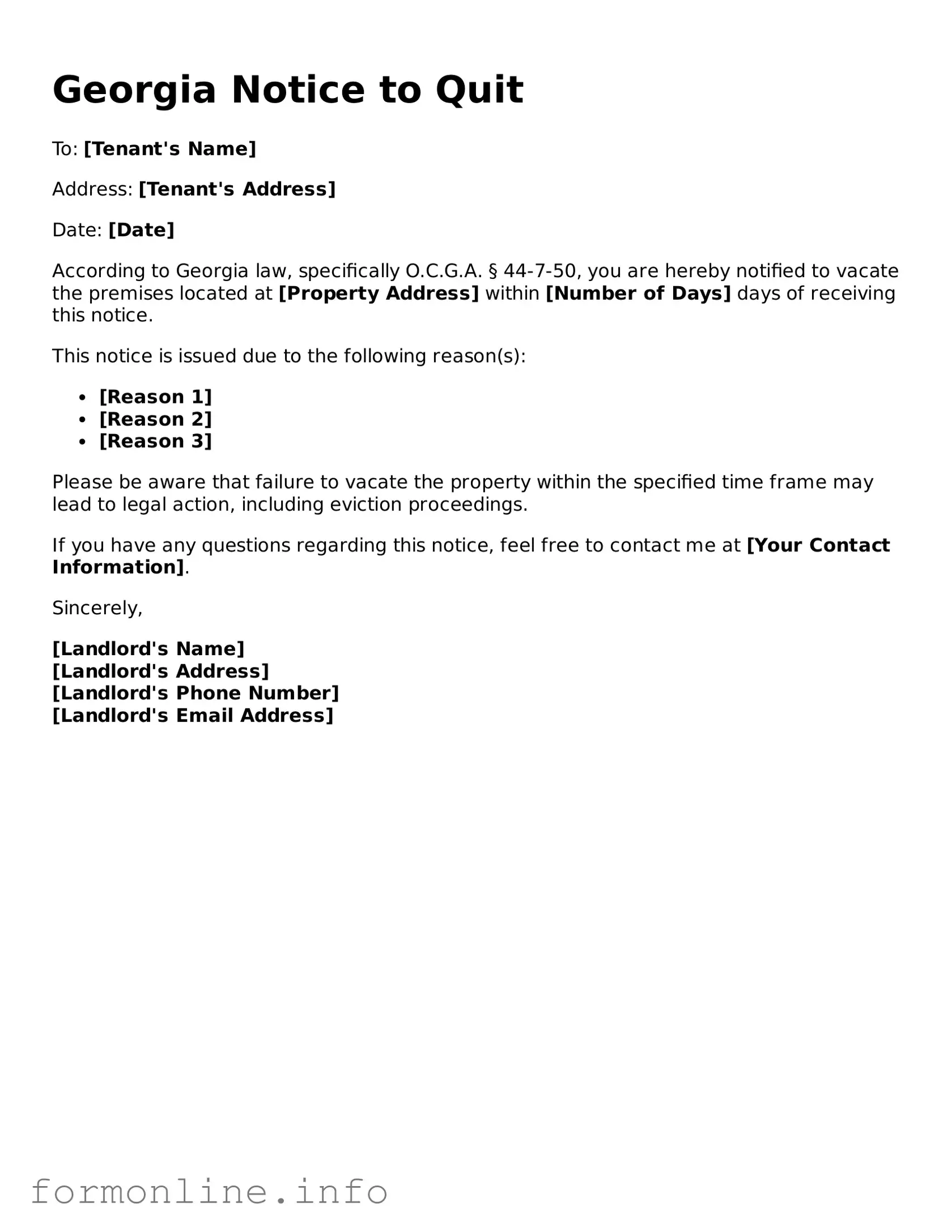Free Notice to Quit Template for Georgia State
The Georgia Notice to Quit form is a legal document that landlords use to inform tenants of their intention to terminate a lease agreement. This notice serves as a formal request for tenants to vacate the property within a specified timeframe. Understanding this form is essential for both landlords and tenants to ensure compliance with state laws and to protect their rights.
To proceed with filling out the form, please click the button below.
Prepare Form Online
